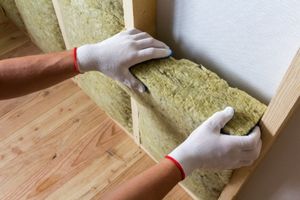While keeping you warm and comfortable is a huge part of home insulation’s role, there are many other benefits of a good insulation job. On the other hand, a poorly insulated home can put a dent in your wallet and be a serious headache in more ways than one. Here’s how to tell if your home is properly insulated so you can know whether you need to contact a professional.
The Touch Test
The touch test is the number one way to tell if your home is well insulated. This simple test consists of touching your home’s walls, floors, or ceilings and checking their temperature on a rainy or cold day. Your walls should feel warm and dry if your home is well insulated. However, if your walls are cold or feel slightly damp to the touch, this is a big sign your home isn’t well insulated.
High Energy Bills
While energy bills tend to go up and down with the change of the seasons, it’s essential to keep track of your energy bill through the years. As homes get older, the quality of insulation can go down, which will slowly cause the energy bill to rise. If you’re seeing an increase in your energy bill and know it doesn’t have anything to do with inflation or the seasonal changes, you may have an insulation issue.
Water Leakages
Water leakage in a home can be very sneaky. For example, if you notice water leaking through your windows or attic when it rains or snows, poor insulation is likely the culprit. However, not every water leakage is evident, as it can show up as water damage or mold.
Water damage can look like yellowing or bubbling paint and even leave a musty odor in your home. Mold also smells must and damp but appears as black or dark green splotches. In addition, your home’s atmosphere may start to feel damp, humid, or sticky.
Now that you know how to tell if your home is properly insulated, consider looking around your house and deciding if you need to contact a professional. You may even be able to point them in the right direction with your new expertise!
Pros and Cons of Different Home Insulation


